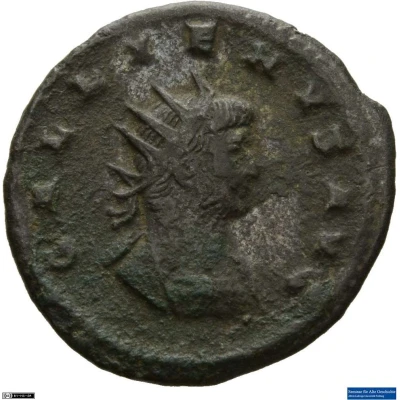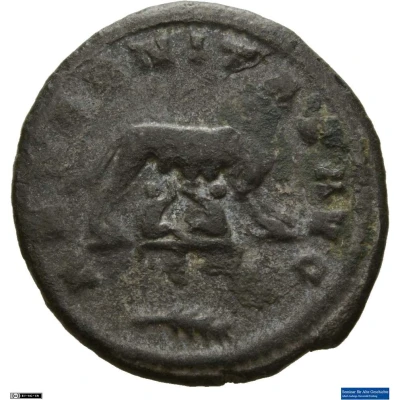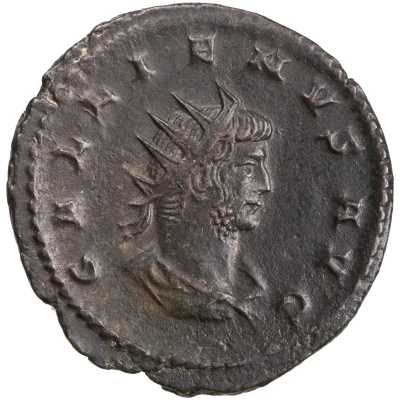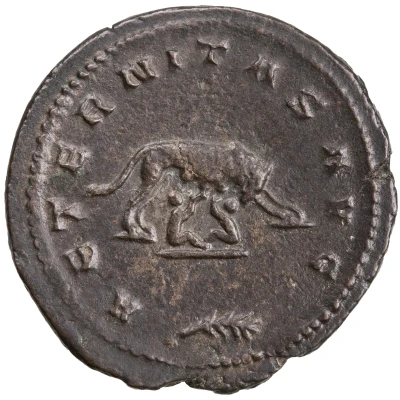


© Münzsammlung des Seminars für Alte Geschichte, Albert-Ludwigs-Universität Freiburg (CC BY-NC-SA 3.0 DE)
Antoninianus - Gallienus AETERNITAS AVG; Romulus
| Silver | 2.9 g | 22 mm |
| Issuer | Rome › Roman Empire (27 BC - 395 AD) |
|---|---|
| Emperor | Gallienus (Publius Licinius Egnatius Gallienus) (253-268) |
| Type | Standard circulation coin |
| Years | 260-268 |
| Value | Antoninianus (1) |
| Currency | Antoninianus, Reform of Caracalla (AD 215 – 301) |
| Composition | Silver |
| Weight | 2.9 g |
| Diameter | 22 mm |
| Shape | Round (irregular) |
| Technique | Hammered |
| Demonetized | Yes |
| Updated | 2024-10-05 |
| Numista | N#289437 |
|---|---|
| Rarity index | 97% |
Reverse
She-wolf suckling Romulus and Remus. Officina mark in exergue.
Script: Latin
Lettering:
AETERNITAS AVG
(palm-branch right)
Translation:
Aeternitas Augusti.
Eternity of the emperor (Augustus).
Comment
Example of this type:Münzsammlung des Seminars für Alte Geschichte, Albert-Ludwigs-Universität Freiburg
Source:
Online Coins of the Roman Empire (OCRE)
Interesting fact
The Antoninianus coin was issued during the reign of Gallienus, who was the Roman Emperor from 260 to 268 AD. During his reign, the Roman Empire was facing numerous challenges, including invasions by barbarian tribes and internal conflicts. Despite these challenges, Gallienus was able to maintain the empire's stability and issue coins like the Antoninianus, which was a standard circulation coin at the time. The coin's design features an image of Romulus, the legendary founder of Rome, on the obverse (front side), and the emperor Gallienus on the reverse (back side). The inscription "AETERNITAS AVG" on the coin means "Eternity of the Emperor" in Latin, highlighting the idea that the emperor's rule was eternal and divine. Overall, the Antoninianus coin is an interesting piece of history that provides insight into the Roman Empire's economy, politics, and culture during a time of significant change and upheaval.

